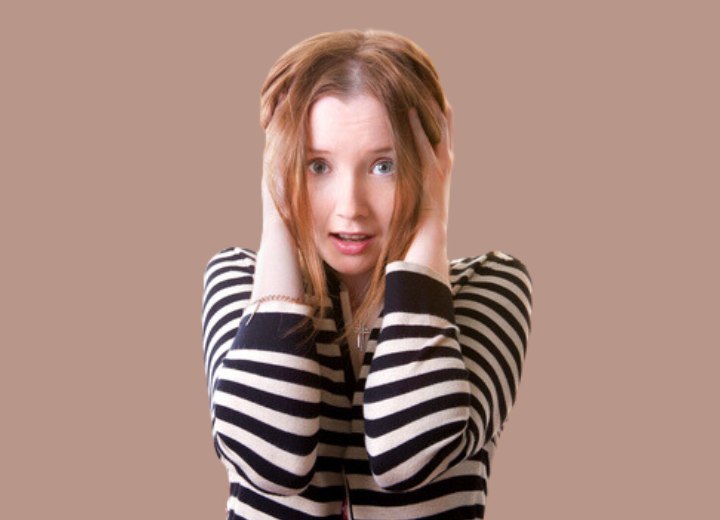Fine Hair

Sometimes the hair is just a bit finer in texture than average and feels light and a bit difficult to manage without using products to weigh it down. At other times, however, it's as if an adult has a baby's hair texture.
Let's look at fine hair and the areas of cutting, styling, and coloring it, and see if we can offer any useful tips for dealing with fine hair types.
Cutting:
Fine hair types come in a wide range of wave patterns, from completely straight to very curly, and because of this, there is a need to know how to create blunt and layered cuts in fine hair. As a general rule, the straighter the hair, the less layering should be used when it comes to fine hair. Curly hair, on the other hand, is prone to the "pyramid" effect if not layered and allowed to grow out to longer lengths, so layering is important to balance the amount of bulk and create a flattering silhouette.
If the hair is only mildly wavy, you should consider keeping your layering stepped and the layers shallow within each step. By avoiding drastic layering, you can prevent the fly-away and wispy looks that are all too common in fine hair types. This is also true when dealing with straighter hair and trying to add some volume and body to the cut.
Curlier hair can withstand steeper, graduated layering, since the curl and volume will help to diffuse the cutting angles. Just remember to pay attention to the hair’s elasticity and the bounce of the curl. Because the hair is fine, the length can easily pull out the existing curl, and you may find that simply cutting off an inch or two in length causes a dramatic increase in curl and therefore the hair appears much shorter than intended.

Styling:
When it comes to styling fine hair, it’s always better to err on the side of caution. Heated tools should be set to lower temperatures and you should treat the hair more gently than you might normally do - at least until you're sure of how the hair will respond. Often, fine hair can be difficult to curl because its small diameter means it doesn't have as much structural integrity and thus won't hold a new shape easily.
Of course, you can maximize your results in myriad ways, including a chemical texturizing service to make the fine hair look and feel coarser. A common technique for dealing with fine hair textures is to perform an acid perm (exothermic wave) where a gentle waving solution is applied to the hair wrapped around large tools. Then heat is applied so that the hair shaft gently swells and takes on a slightly altered wave pattern depending on the tools used.
The result is that the hair appears coarser, fuller, and is usually easier to style. It's important to use an acid-based perm for this because the acid perms are much gentler on the hair and there's less risk of damaging it.
You also want to make sure that you don’t overload fine hair with products. Use light-hold sprays, lotions, and mousses, especially with fine and straight hair types when you want to maintain volume levels in the style. The only exception to this is if you are planning to style the fine hair into a curly style and are starting with straight hair. Use a stronger hold product, such as a gel, so that you can create a long-lasting style.
Continue reading ...